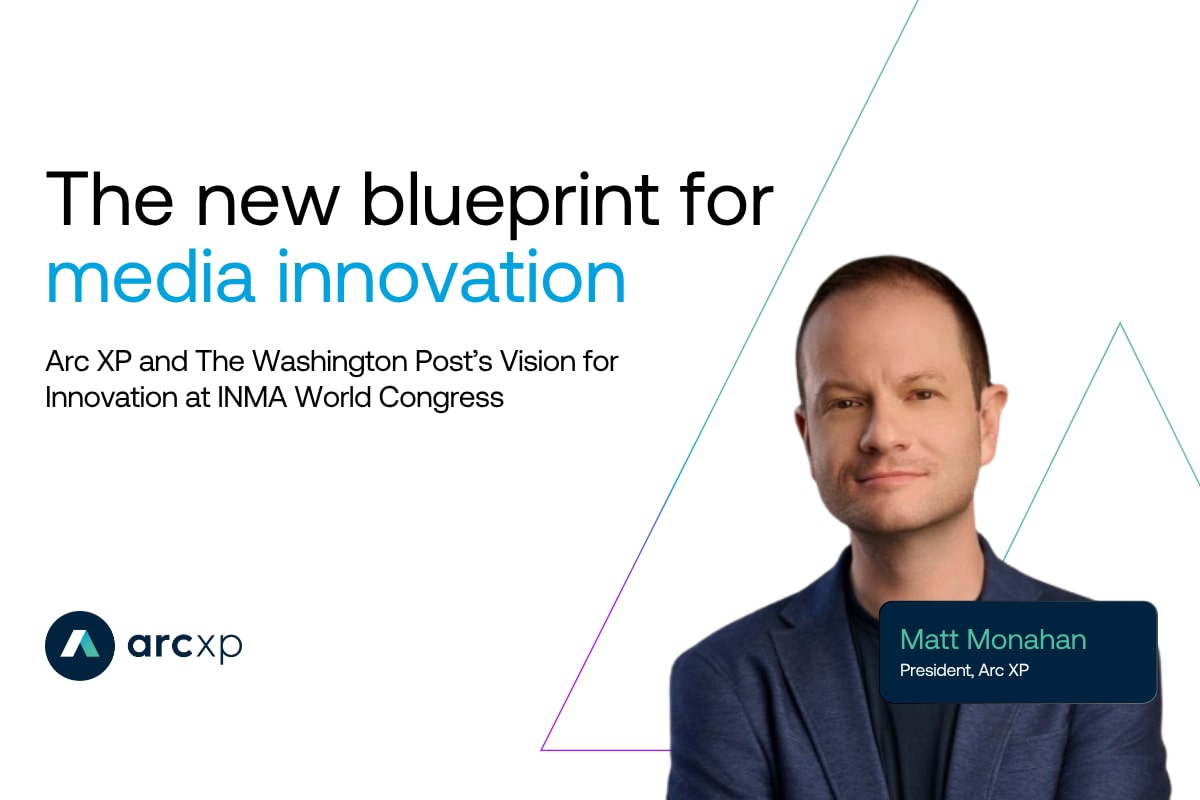1:1 with Graham Media Group: Handling the challenges of broadcasting in a pandemic and building viewer membership
For an industry steeped in a feet-on-the-ground, working side-by-side mentality, overcoming the challenges COVID-19 restrictions presented to TV broadcasters has been no easy feat.

Back in the summer of 2020, we had the chance to sit down with Jonathan Beard, the now former Director of Digital Product Development for Graham Media Group, to discuss how Graham and their regional broadcast affiliates have handled the challenges of the pandemic and how they’re rethinking the traditional broadcast viewer relationship.
The pandemic’s stay-at-home and social distancing restrictions turned many industries, including TV broadcasting, on their heads virtually overnight. How did your stations handle the resulting challenges?
JB: Like so many others, we had to quickly pivot to working in a decentralized, remote fashion-- which in traditional broadcast, is an anathema. With many broadcasters there is a particular reliance on analog technology and the sort of legacy way of doing things.
On the digital side of our business, we have aggressively and intentionally been decentralizing our operations well before the pandemic hit. This really helped us move pretty seamlessly to the COVID existence we’re in right now. Our digital teams who were co-located, more or less worked remotely in place so for them it was a simple transition.
For our internally located teams and field reporters, having tools like Arc XP’s Broadcast app and the overall Arc XP video infrastructure, made the transition a lot smoother than it would have been otherwise.
For all the challenges experienced, one of the positive impacts we’ve seen is our anchors and reporters, who were used to a very structured experience become more independent, willing to take more risks and be more conversational with the audience. As we start to dive into membership where one of the perks is having more direct access to talent, to see this ability to dialogue with the audience has been a big benefit.
From the digital aspect, what are some of the media consumption trends you’re seeing as a result of the pandemic?
JB: For one, local media sites have seen a huge surge as people went to online news sources for answers about their own communities and how all these things are impacting them, whether it’s the protests or the coronavirus or any of the things that have been a general trend across the country. Migrating to Arc XP in 2019 enabled a lot of the things we had aspired for in terms of page load speed, SEO, overall performance and the ability to iterate quickly.
Combined with our emphasis on audience and the things that philosophically drove us away from empty calories to really focus on local coverage, we were particularly well positioned to deliver on the increasing demand and have seen enormous site traffic growth over the past several months.
You and Arc XP partnered to develop the first live-streaming app, Broadcast. What has been the impact of that app for Graham?
JB: When we look back it has been just over a year since we first went live in a prototype state after an aggressive R&D process with Arc XP. Since the beta launch, it has become part of our station’s regular planning coverage. What has made the app so successful is not viewing it as a standalone thing but thinking of it cohesively as part of digital news coverage. This has been a significant transition for us. It’s not complete yet, but in a year’s timeframe to have the kind of mindset and adoption for day-to-day routine news coverage that we’ve seen has been huge.
One of the benefits--and it’s less directly tangible yet but is absolutely essential to us from a strategic perspective--is that we’re seeing reporters transition away from using Facebook Live as a low friction live stream source to Broadcast. This means we can make that footage part of our ecosystem which includes revenue. Facebook Live doesn’t benefit us from a revenue perspective in being able to do sponsorable live ad insertions and doesn’t support our goals from an audience or platform side.
The pandemic itself has been a real motivator for our teams to identify new ways to engage audiences using the Broadcast app as an element of this coverage such as with the May SpaceX Dragon launch.
Because of the pandemic, NASA wasn’t allowing anyone to be present for the launch so our Orlando station, WKMG-TV, created a live streaming watch party. They held an on-air promotion to select 20 people who added an interesting element to the event. One participant was a young man studying aeronautical engineering and wanted to be an astronaut. Another was roommates with Neil Armstrong back in college.
They brought these people together on Zoom where they fed in a combination of streams. Some were from reporters on the beach with rocket launch views using the Broadcast app to stream straight from their phones, others were from fixed cameras pointing at the launch site. We were also able to incorporate camera angles from SpaceX itself. The watch party was streamed on WKMG’s website where people could then watch the coverage and hear the commentary. All this was done in real time and it was incredibly successful.
You talk about diving into membership, which isn’t something traditional broadcasters tend to think about. What is driving this interest and what does membership look like for broadcasters?
JB: Television is very different from newspapers, in that newspapers when they were forced by circumstance to transition their business model, they already knew who their audience was due to the physical newspaper subscriptions and could encourage them to become digital members. Because television goes out over the airwaves, we’ve had no real relationship or knowledge of our viewers like that.
We’ve aspired for years to develop a membership model that creates this direct relationship but really, it’s been over the course of the last year that we’ve been able to get any traction and part of that is tied to us being able to move as quickly as we are in other areas by being on Arc XP.
I think it’s important to note that we don’t intend to paywall content in the same way newspapers do. For us, membership is about building interactions, understanding and increasing dialogue to create a funnel that goes into escalating levels of audience engagement.
When we look at it in terms of advertising revenue, there is a breakpoint between someone who is a casual one and done and doesn’t come back kind of person and someone who is like “okay this is my go-to news source.” I download the apps, I’m on the mailing lists. Those kinds of users, their usage on our platforms, purely from a display and video advertising perspective, is maybe 10-13% of the users but account for 65-70% of the revenue. And the more you grow the number of highly engaged users, the more you grow the core revenue driver purely from an advertising perspective.
To establish these direct relationships, we’ve explored live events, which in the COVID era is not a successful solution as it was historically. But we’re doing virtual events like meteorologist clubs for those people who are weather geeks to have direct access to meteorologists. It’s amazing to watch these folks who love to dive into incredible depths on weather questions with the people who are into that. That feedback relationship we’ve seen develop is really cool and gives us the opportunity to provide a venue for that.
So, as we build this out it’s identifying these niches and connections and finding a way to monetize those. Maybe you have these virtual events, which we won’t paywall, but we will do a membership wall so if you want to participate you need to sign up and become a member. And it’s just ways to further increase the level of engagement. There may be some transactional stuff that happens as part of that membership but it’s not the principal driver.
What do you see on the horizon for Graham?
JB: One of the things coming down the road that has the opportunity to change broadcast is NextGenTV, or ATSC 3.0, which turns the broadcast signal into a higher capacity signal that we can pass data along. From our perspective, the prototyping we’ve been doing with our OTT is a good parallel for what we see there and when we put that in the perspective of membership being a fully connected experience, we recognize big picture that we’re competing for eyeballs with Netflix and other streaming services.
We know that, and the data really bears this out, that people are connected to their communities and really want to be able to interact with it more and so the intersection point of our expertise in live video, membership participation and dialogue is where we’re putting our efforts. So, having that be a seamless experience as the user moves from platform to platform is where we see the future and how that connects to a dialogue, how participatory that experience is.
Part of the value proposition that we offer, and ultimately can drive revenue from, is not a traditional subscription approach like our streaming competitors like Netflix and Hulu but being able to still offer our content for free but position it as a doorway to participate in the niche interest stuff in your local community that you want to and we feel like there is a value associated with that. So, it’s finding the way for people to participate in those things they’re interested in and have that exchange take place, not as one size fits all but through individualized participatory actions is the future for us.
Recent resources





